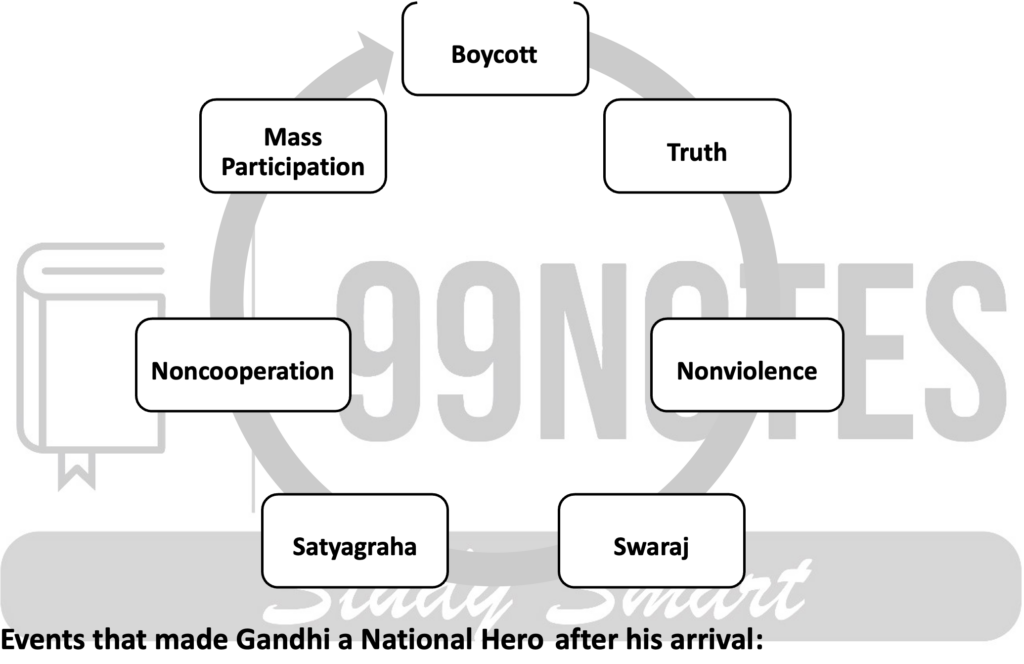24 July 2023 : Daily Answer Writing
Mains Answer Writing
One of the key components of these exams is the written test, which consists of a number of essay and comprehension questions. Candidates are expected to write clear and well-structured answers that demonstrate their knowledge and understanding of the topics being tested.
24-July-2023
Q. The arrival of Mahatma Gandhi changes the rift in the Indian nationalist struggle. Elucidate.
Solution:
Introduction: After the Surat split, the Indian nationalist ranks seemed divided.
The Communal electorate introduced in 1909 also divided the national unity. The Gandhian arrival in 1915 led to a coherent opposition to the British Raj. 
Unique methods of Gandhiji in the Indian nationalist struggle:
- Champaran satyagraha – 1917: Following a strategy of nonviolent protest, he won concessions on revenue from the authorities.
- Kheda satyagraha – 1918: Using non-co-operation as a technique, a signature campaign was initiated by Gandhiji where peasants pledged non-payment of revenue due to famine. A social boycott of mamlatdars and talatdars accompanied the agitation. This forced the government to relax the conditions of revenue payment until the famine ended.
- Ahmedabad Mill Strike – 1918: Mahatma Gandhi used satyagraha and Hunger strike to settle the dispute workers and owners of a cotton mill in Ahmedabad. The mill owners agreed to raise the workers’ wages by 50% as they demanded.
- Khilafat Movement: He brought Muslim leaders closer to Congress and bridged the communal gap.
The Rift was resolved by the Gandhian Action:
- Re-initiated mass movement: The mass struggle gave hope to the people all other divisions in nationalist ranks became irrelevant.
- Moderates versus Extremist rift diluted: Many Moderate as well as the extremist leaders backed Gandhi as his methods were non-violent but the demands supported the extremist cause.
- Communal Unity: After the Minto Morley reforms, a communal rift was introduced in the Indian society. The Lucknow pact of 1916 and the Khilafat movement bridged that rift.
Gandhain Role was complemented by other factors:
- Lucknow pact: The Home rule leaguers as well as the moderates came to an agreement in 1916, which was the main reason for the unity between the two factions.
- Communal unity reinforced by the Lucknow pact itself.
- Home rule league itself achieved mass character: The world war-I and the Hindu muslim unity gave Home rule League a mass character.
- Moderates became less relevant: They were unpopular within the congress after the Surat Split. This itself acted in favour of achieving the national unity.
Conclusion
Thus, apart from the works of Home rule league and the Lucknow pact, the Gandhian struggle was one of the major factor that helped in achieving unity amongst the nationalist ranks in India.
Upload Answer here
For Enquiry

24 July 2023 : Daily Answer Writing

21 July 2023 : Daily Answer Writing

20 July 2023 : Daily Answer Writing

19 July 2023 : Daily Answer Writing

18 July 2023 : Daily Answer Writing

17 July 2023 : Daily Answer Writing

15 July 2023 : Daily Answer Writing

14 July 2023 : Daily Answer Writing

13 July 2023 : Daily Answer Writing

12 July 2023 : Daily Answer Writing




